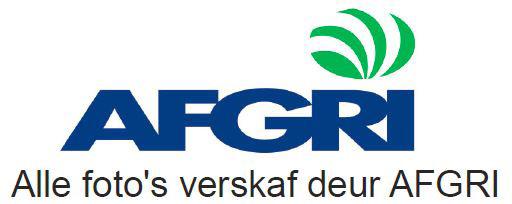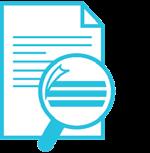Grade 11 • Study Guide Agricultural Sciences
Owned and published by Optimi, a division of Optimi Central Services (Pty) Ltd.
7 Impala Avenue, Doringkloof, Centurion, 0157 info@optimi.co.za www.optimi.co.za
© Optimi
Apart from any fair dealing for the purpose of research, criticism or review as permitted in terms of the Copyright Act, no part of this publication may be reproduced, distributed, or transmitted in any form or by any means, electronic or mechanical, including photocopying, recording, or any information storage and retrieval system without prior written permission from the publisher.
The publisher has no responsibility for the persistence or accuracy of URLs for external or third-party internet websites referred to in this publication, and does not guarantee that any content on such websites is, or will remain, accurate or appropriate.
There are instances where we have been unable to trace or contact the copyright holder. If notified, the publisher will be pleased to rectify any errors or omissions at the earliest opportunity.
Reg. No.: 2011/011959/07
Agricultural Sciences
Study guide
Grade 11
CAPS aligned
M Kotzè JC Zandberg Í3+È-E-AGS-SG01hÎ
2. The different macro-elements: Nitrogen, sulphur, phosphorus, potassium, calcium and magnesium (importance/functions and form in which it is absorbed and the deficiency symptoms of each) ..........................................................................
3. The different micro-elements: Iron, manganese, boron, zinc, copper, molybdenum and cobalt (importance/functions and form in which it is absorbed and the deficiency symptoms of each)
14.
INTRODUCTION
What does Agricultural Sciences involve?
Agricultural Sciences is the study of the relationship between soil, plants and animals in the production and processing of food, fibre, fuel and any other agricultural product, which has an economic, aesthetic and cultural value.
It is an integrated science, which combines the knowledge and skills of Physical Sciences, Life Sciences, Social Sciences, Soil Sciences, Engineering, Mathematics and Economics. This subject must be seen within the holistic science framework and not as an isolated science. Agricultural Sciences embeds a sustainable agricultural environment by integrating theory and skills in the study of the food production chain and processing. It focuses on the management skills needed to sustain production in a viable way.
The main topics in the Agricultural Sciences curriculum are:
1. Soil sciences
2. Plant studies
3. Animal studies
4. Agricultural economics
5. Basic agricultural chemistry
6. Basic genetics and biological concepts
7. Sustainable natural resource utilisation
8. Agroecology
ADDITIONAL SOURCES
Agricultural Sciences for All by W Burger: N Phewa; M Burger
Focus on Agricultural Sciences by J de Fontaine; B Letty; K Morrison; A Smuts
The New Agricultural Science by Burger; Moolman Agricultural magazines: Farmer’s Weekly, Agri Farmer and Stock Farm. The internet.
RESOURCES
You need the following resources to complete the subject successfully:
• Impaq study guide
• Impaq facilitator’s guide
• Impaq portfolio book
• June examination
• November examination
• Clothes, shoes and equipment needed for physical activities
• A farm where practical work can be done
LESSON ELEMENTS
LEARNING AIMS
What the learner should know at the end of the lesson. Taken from CAPS.
IMPORTANT TERMINOLOGY
New terminology to extend understanding of the subject as part of the lesson.
DEFINE
Definitions of concepts to help the learner understand the content.
IMPORTANT
A summary or explanation of key concepts explained in the lesson.
TIPS
Information in addition to the content to guide the learner through the learning process.
FOR THE CURIOUS
Encouragement for the learner to do in-depth research about the content on his/her own.
CORE CONTENT
Reinforcement of core content; in-depth explanation of a specific section of the lesson.
ACTIVITY
Formative assessment to test the learner’s progress and knowledge of each completed lesson.
Sample
EXERCISE
Formative assessment to test the learner’s progress and knowledge of each completed unit.
STUDY/REVISION
Demarcation or summary of work to be revised in preparation for tests and examinations.
* All lesson elements are not necessarily used in this guide.
Every lesson will consist of the following learning activities:
• A challenge
• Agricultural Sciences content
• Activities to solve the challenge
• Application and revision
As well as:
• Learning outcomes
• Definitions
• Enrichment activities (For the curious)
• Summaries
• Self-assessment activities
TIMETABLE AND TIME MANAGEMENT
The suggested time allocation for Agricultural Sciences in Grade 11: Number of
Total number of weeks available to study this content in Grade 11 30 Duration of each unit
Number of lessons per unit 7-10 lessons
Duration per lesson 45 minutes
* Try to work at least one hour per day. You may choose which four days a week to spend on Agricultural Sciences.
Requirements for Agricultural Sciences as subject:
• Each learner should have a study guide.
• Keep in mind that the learners also have to complete tasks in Agricultural
• Sciences and therefore have to allow enough time to work on those.
Sample
• Learners must have access to a farm where the required practical assessment tasks can be done.
• Review the previous day’s work daily.
• Make use of the assignments in the study guide. Completing the assignments will help with preparation for the examination.
• Assignments in the study guide do NOT form part of the portfolio work.
• Portfolio work consists of the seven tasks as set in the assessment plan in the portfolio book and must be handed in separately – ONLY these tasks form
• part of the portfolio.
• NO portfolio – NO marks. It is very important to keep the portfolio up-to-date and submit tasks or the marks according to the dates provided in the assessment plan in the portfolio book.
Task 1
Task 2
Task 3
Task 4
Task 5
Task 6
Task 7.1
Task 7.2
ASSESSMENT REQUIREMENTS
Portfolio
Practical assignment
Term 1 test
50 See portfolio book
75 See portfolio book
Practical investigation 50 See portfolio book
June examination
150 See portfolio book
Research project 50 See portfolio book
Term 3 test
November examination 1
November examination 2
* The assessment tasks contribute 25% to the final mark.
75 See portfolio book
150 See portfolio book
150 See portfolio book
* The work done in terms 1 and 2 are assessed in the June examination.
Format of November examination
The June examination (only one paper) will have the same format, but not all the content since not all the content will have been covered yet.
The November examination (two papers) will consists of the following:
* The final examination marks are 300 – thus 75% of the total mark.
* The SBA marks are 100 – thus 25% of the total mark.
Total marks = 100 + 300 = 400 ÷ 4 = 100
STUDY TIPS AND METHODS
Agricultural Sciences is a science – therefore, learners taking this subject must spend a lot of time on intensive study to master all the facets and facts of the subject.
• Don’t let the work pile up and become too much – study on a daily basis.
• After completing a chapter, make sure you learn the facts and make summaries.
• Make sure you understand all the material and ask somebody to explain it if you do not.
• If you wait too long until you ask for an explanation, you may discover that the material does not make sense and you then need more time to learn the work.
• Make use of diagrams, redraw the sketches yourself and underline the important facts.
• Sketches in tests and examinations can differ from the study guide sketches.
• Use other text books or google different images for the same topic.
• Make columns of the difficult names – make sure that you know the meaning of each of those names.
• Use the activities in the study guide as tests – after completing a lesson, first study the material and complete the questions in the activity as you would do in a test –in this way, you will be able to see, which part of the work you haven’t mastered yet.













